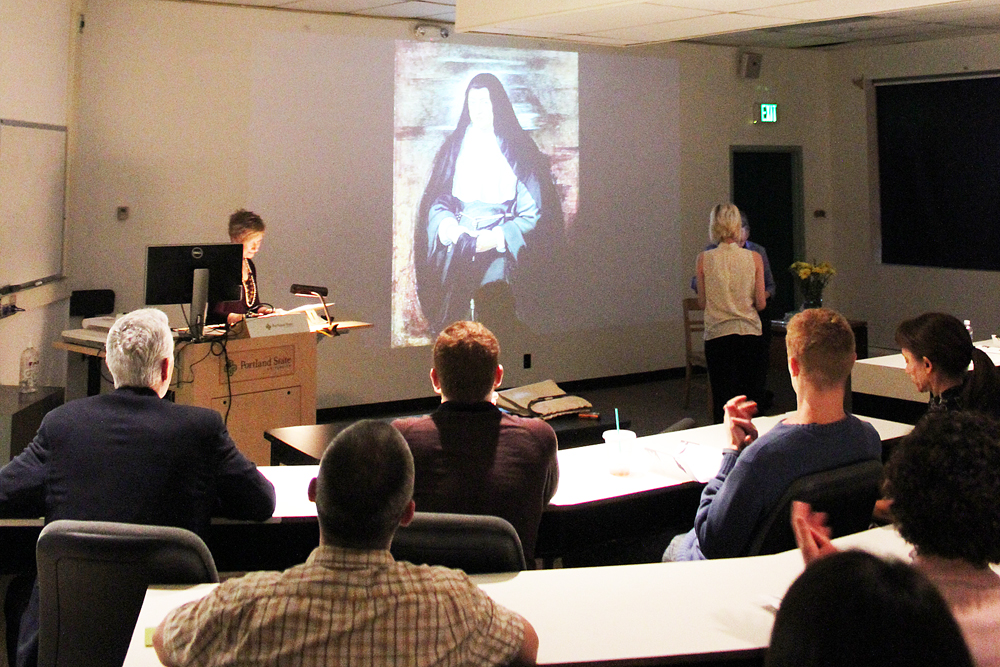Whether it is for the purpose of cutting down on garbage costs or simply being green, composting has become an urban trend.
Compost it
Whether it is for the purpose of cutting down on garbage costs or simply being green, composting has become an urban trend.
It’s not hard to understand why. Though a dirty job, it is perhaps the easiest action a person can take to be green. All you do is, well, throw stuff away. That’s it.
Plant nurseries and gardening shops all over Portland will sell you dirt for a pretty penny. It’s good healthy soil, but some folks may scratch their heads at the thought of paying money for…dirt. The fact of the matter is, not all dirt is equal and some are better to grow plants in than others. For gardeners, good old-fashioned dirt is another reason to compost.
Composting is basically taking most of the waste you would throw in your garbage can, putting it in a bin and turning it into soil. The resulting product can be used for natural fertilizer, landscaping material or just to simply cut down on the cost of waste management.
It’s as easy as one, two, three.
Step one: Get a compost bin. You can build your own by, well, building a box. It’s not rocket science—just put up four walls and a lid. Or you can purchase any number of bins currently on the market. This option might be more aesthetically pleasing for those who aren’t as gifted with a hammer and nails.
One thing to keep in mind for any bin is to make sure that it is completely contained. Keep a lid firmly on the bin and be sure that your base is blocked—meaning, put down some tiles, bricks or cinder blocks to prevent burrowing pests from getting into your compost. You’re basically providing an all-you-can-eat buffet for the urban wildlife, so cutting them off is key.
Step two: Toss your waste in. Once you have your bin, start throwing your waste into it. Just let it pile up. Once in a while, to speed things up, it helps to stir up the mix. This ensures that oxygen is getting into the compost. Use a shovel or pitch fork and move the mess around. Some compost bins for sale have a moveable feature allowing them to spin, roll or tumble. This really helps the dirt-making process along.
Step three: Wait. Sit back and allow nature to take its course, turning your household’s waste into soil. After about a month to a year, you end up with a decent product. All that really happens at this point is the waste you put into your bin rots and decomposes. It would happen anyway, you are just isolating it for later use.
What can you compost?
It’s surprising how many things you can compost:
– Some cardboard
– Paper
– Coffee grounds
– Dryer lint
– Eggshells
– Sawdust
– Tea bags
– Wool or cotton rags
– Yard waste and grass clippings
– Pet hair and fur
– Fireplace ashes
– Any organic material such as dead houseplants, banana peels, apple cores, old bread, nut shells, etc.
What can’t you compost?
Remember, most compost can be used for planting or landscaping. You don’t want to put items into the mix that can break down and be harmful to your plants. Do not compost these items:
-Dairy products such as butter or sour cream, or meat waste including fats and grease. These can attract pests—more so than your average pile of trash
-Any yard waste treated with chemicals or yard waste that was diseased
-Pet waste. Fido and Mittens might mean well, but their waste may have certain bacteria and other bad attributes that you won’t want in your compost
-Glossy print paper. Sorry—your collection of National Geographic won’t help you here. Glossy paper contains too many chemicals to be used for composting




